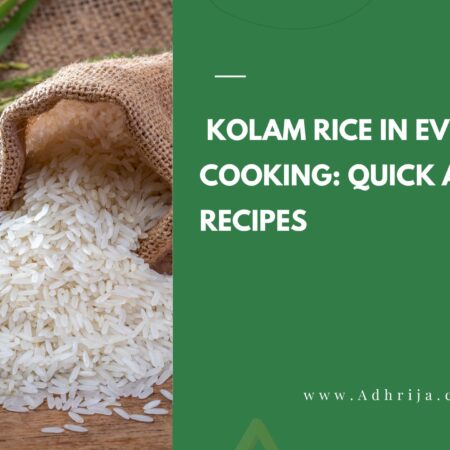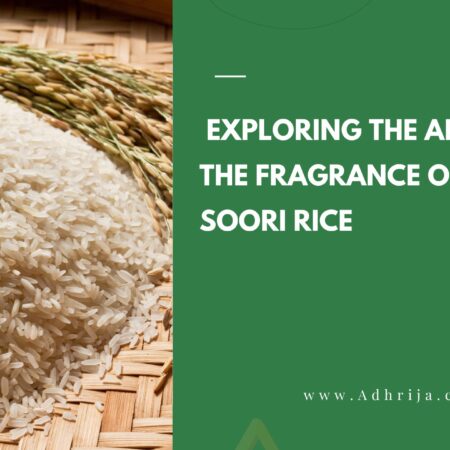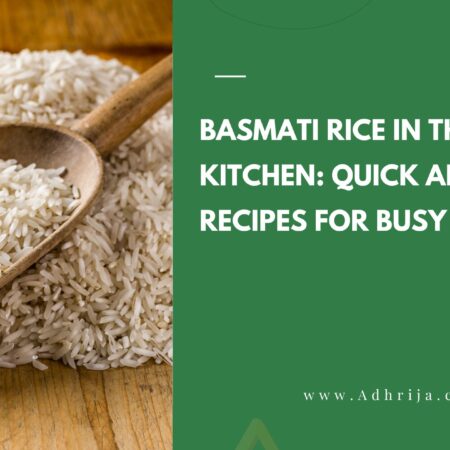
Rice is a staple food for many cultures around the world, and is a key source of carbohydrates in many people’s diets. Regular Rice, also known as white rice, is the most commonly consumed type of rice in the world. It is made by removing the outer husk, bran, and germ layers of the rice grain, leaving only the starchy endosperm. Basmati Rice, on the other hand, is a long-grain rice that is native to the Indian subcontinent. It is known for its distinctive aroma and fluffy texture, and is often used in Indian and Middle Eastern cuisines.
Nutritional Comparison: Basmati vs Regular Rice
Let’s see the nutrational comparison between Basmati vs Regular Rice. While both types of rice are high in carbohydrates, Basmati Rice has a lower glycemic index than Regular Rice. This means that it is less likely to cause spikes in blood sugar levels, making it a better option for people with diabetes or those watching their blood sugar levels.
Basmati Rice also contains more fiber than Regular Rice, which is important for digestive health and can help lower cholesterol levels. Additionally, Basmati Rice is a good source of B vitamins, particularly thiamin and niacin, which are important for energy metabolism and the maintenance of healthy skin, eyes, and nervous system. Regular Rice, on the other hand, is typically enriched with iron, folic acid, and other nutrients, making it a good option for people who may not be getting enough of these nutrients from other sources.
Health Benefits of Basmati Rice
Basmati Rice has a number of health benefits that make it a nutritious addition to any diet. As mentioned earlier, it is high in fiber, which can help regulate digestion and lower cholesterol levels. Additionally, Basmati Rice contains antioxidants that can help protect against chronic diseases such as cancer, heart disease, and diabetes.
Basmati Rice is also a good source of complex carbohydrates, which provide sustained energy and can help regulate blood sugar levels. This makes it a good option for athletes and people with active lifestyles, as well as those who need to maintain steady energy levels throughout the day.
Health Benefits of Regular Rice
While Basmati Rice has some unique health benefits, Regular Rice also has its own nutritional advantages. For example, Regular Rice is a good source of iron, which is important for the production of red blood cells and the prevention of anaemia. It is also enrich with folic acid, which is important for fetal development and can help prevent birth defects.
Additionally, Regular Rice is low in fat and cholesterol, making it a good option for people who are watching their weight or trying to maintain a healthy heart. It is also a good source of carbohydrates, which are important for energy and brain function.
Basmati Rice in Indian Cuisine
Basmati Rice is an integral part of Indian cuisine, and is use in a wide range of dishes such as biryani, pulao, and pilaf. The long, fluffy grains of Basmati Rice are ideal for absorbing the rich flavors of spices and herbs, making it the perfect accompaniment to curries and other Indian dishes.
In addition to its culinary uses, Basmati Rice also has cultural and religious significance in India. It is often use in religious ceremonies and rituals, and is consider a symbol of prosperity and good luck.
Regular Rice in Asian and Western Cuisines
Regular Rice is a versatile ingredient that is use in many different cuisines around the world. In Asian cuisines, it is often serve alongside stir-fries, sushi, and other dishes. In Western cuisines, it is use in dishes such as risotto, paella, and rice pudding.
One of the advantages of Regular Rice is that it is easy to prepare and can be use in a wide range of dishes. It is also relatively inexpensive, making it a popular choice for home cooks and budget-conscious consumers.
Cooking Basmati vs Regular Rice : Tips and Techniques
While both Basmati Rice and Regular Rice are relatively easy to cook, there are some differences in the preparation process that should be note. Basmati Rice requires a longer cooking time and a higher water-to-rice ratio than Regular Rice, as well as a longer resting period after cooking. This helps to ensure that the grains remain separate and fluffy, rather than clumping together.
Regular Rice, on the other hand, can be cook using a variety of methods such as boiling, steaming, or even in a rice cooker. It also requires a shorter cooking time than Basmati Rice, and can serve either hot or cold.
Choosing the Right Rice: Factors to Consider
Personal taste is a key factor; Basmati Rice’s unique flavor and aroma might not suit everyone. Besides, factors like cooking time, ease of preparation, and cost play a role in selecting the right rice for a meal or recipe.
Nutritional content is another consideration; Basmati Rice is ideal for those with diabetes due to its low glycemic index, while Regular Rice may be preferable for individuals needing more iron or folic acid in their diets
Basmati vs Regular Rice : Which One is Better for Weight Loss?
When it comes to weight loss, both Basmati Rice and Regular Rice can be part of a healthy diet. Basmati Rice is a better option for weight management due to its lower glycemic index, helping stabilize blood sugar levels and curb appetite. Additionally, its higher fiber content keeps you feeling full, reducing calorie intake
Additionally, Basmati Rice is higher in fiber than Regular Rice, which can help you feel fuller for longer and reduce the amount of calories you consume overall. However, it is important to remember that portion size and overall calorie intake are also important factors in weight loss, and that both types of rice should in moderation as part of a balanced diet.
Conclusion: Making the Right Choice for Your Health and Culinary Preferences
In conclusion, both Basmati Rice and Regular Rice have their own unique nutritional benefits, cultural significance, and culinary uses. When choosing between the two, it is important to consider personal taste preferences, nutritional content, and the specific needs of your diet and lifestyle. Whether you prefer the distinct aroma and flavor of Basmati Rice or the versatility and ease of preparation of Regular Rice, both types of rice can be part of a healthy and delicious diet.







